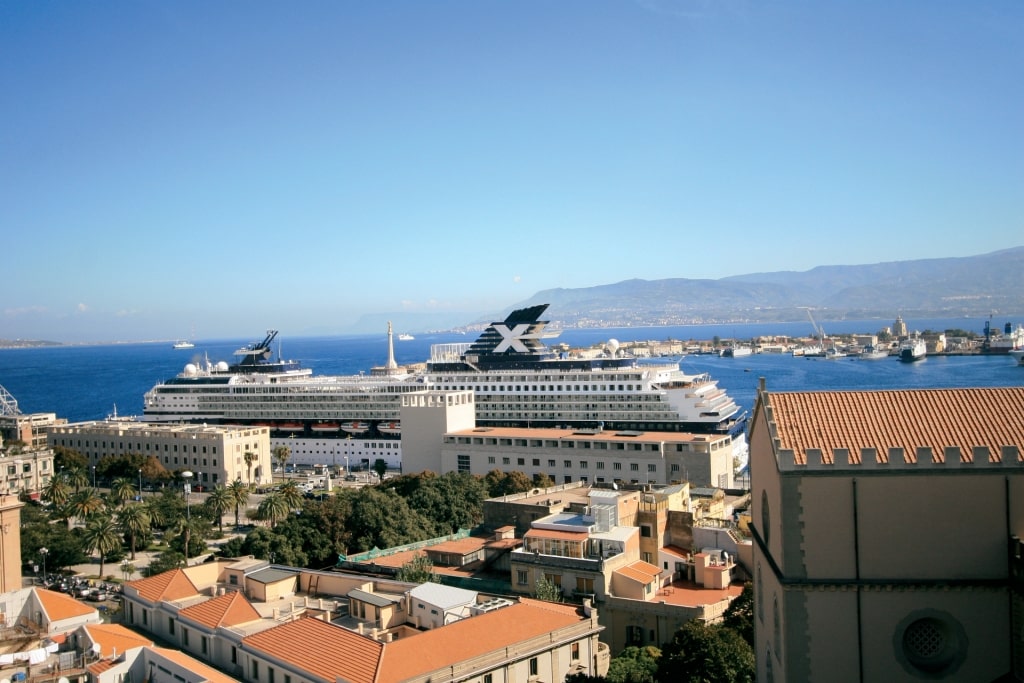There are so many extraordinary cities and towns in Sicily that one visit to this tricorn island, situated midway between Europe and Africa, is never enough.
The magic of Sicily is found in its past and present, both tangible and otherwise, born of a complex history. Each of the civilizations that have swept up onto its sandy shores has left a mark, whether Roman, Arab, Norman, or otherwise. Add to that cultural complexity, exquisite cuisine, open and friendly locals, and a landscape of surpassing natural beauty.
Even small villages in Sicily offer more than you’d expect upon first arrival, and there’s plenty of variety, too. To have the ancient city of Syracuse, the grand capital of Palermo, and effervescent resort towns like Taormina all clustered on a wedge of land roughly the size of Vermont is something close to a miracle.
Here’s a list of the most magical towns in Sicily to visit on your next trip to the island.
Syracuse
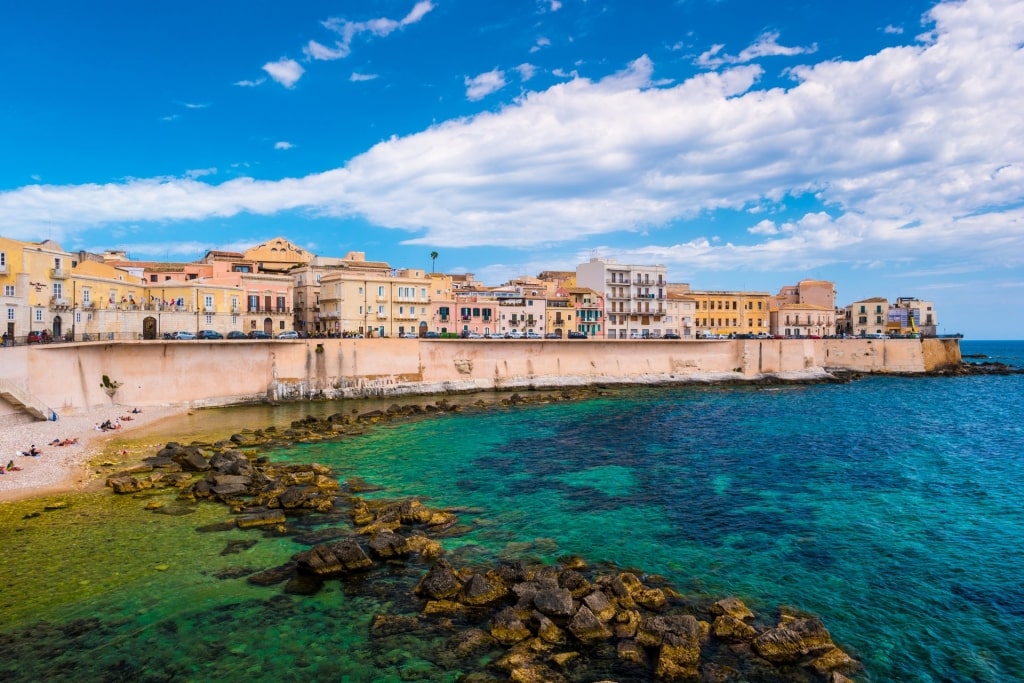
Syracuse
A gleaming architectural lacquer of white limestone on Sicily’s southeast tip, Syracuse is one of the most beautiful cities in Italy. It’s been inhabited since the 8th century BC and was once the largest city in the ancient world. Remnants of Syracuse’s origins, a former Greek colony and home to Archimedes, rise from the soil and act as foundations for the thriving city that stands today.
The island’s heart and oldest district is Ortigia. Connected to the rest of the city by two graceful bridges, Ortigia is a honey-hued warren of ostentatious palazzi, well-stocked wine bars, and some of the liveliest markets in Italy. Its circumference is dotted with breezy restaurant terraces offering lemon-sharpened platters of the produce that encircles them.
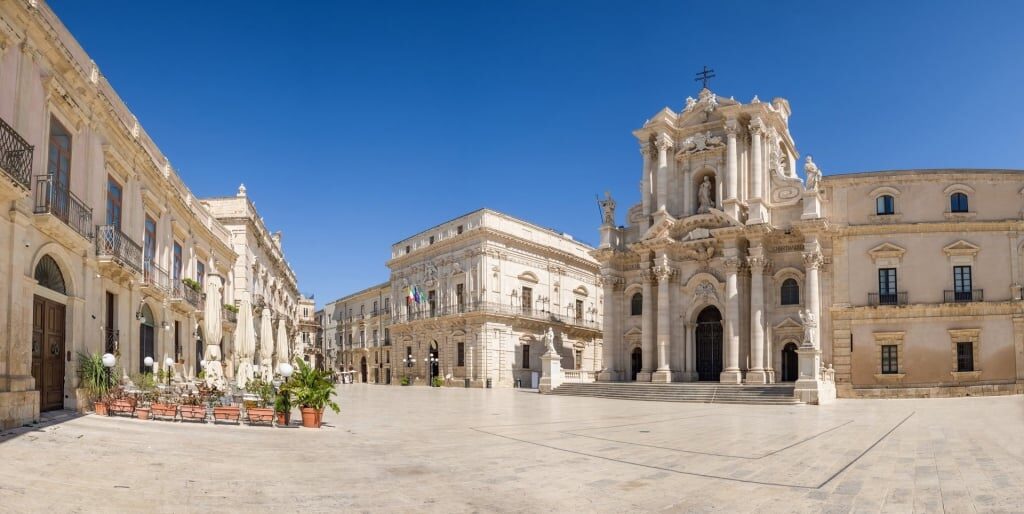
Piazza del Duomo, Syracuse
Ortigia’s core is the Piazza del Duomo, a narrow fan of a piazza that’s, not coincidentally, redolent of a Greek agora. Its flagstones are strewn with cafe tables where Syracusans congregate for superb aperitivi and Sicilian dishes such as orange and fennel salad topped with crushed pistachios.
Amid the refreshments, don’t forget to look in on the Duomo itself, its organic incorporation of an ancient Greek temple is a visual metaphor for Sicily’s history.
To dig deeper into that past, head north to Neapolis Archaeological Park. While exploring the Greek and Roman ruins, be sure to make time for the Latomia del Paradiso. Once ancient limestone quarries, this area has been transformed into perfumed gardens with rambling capers, jasmine, and citrus plants.
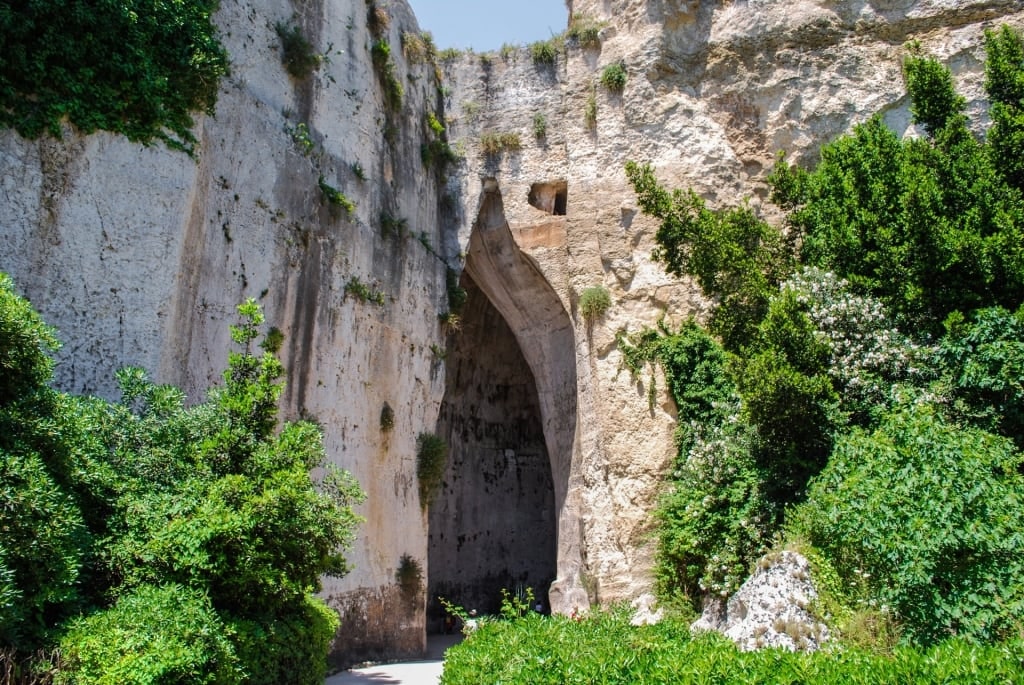
Ear of Dionysus, Syracuse
Don’t miss the nearby Ear of Dionysus, either. This former quarry, a high-roofed cave with curving walls still gouged with ancient chisel marks, is renowned as the place where the tyrant Dionysius I once imprisoned his enemies. According to legend, Dionysius would eavesdrop on his enemies from the opening in the roof 72 feet overhead.
Castelmola
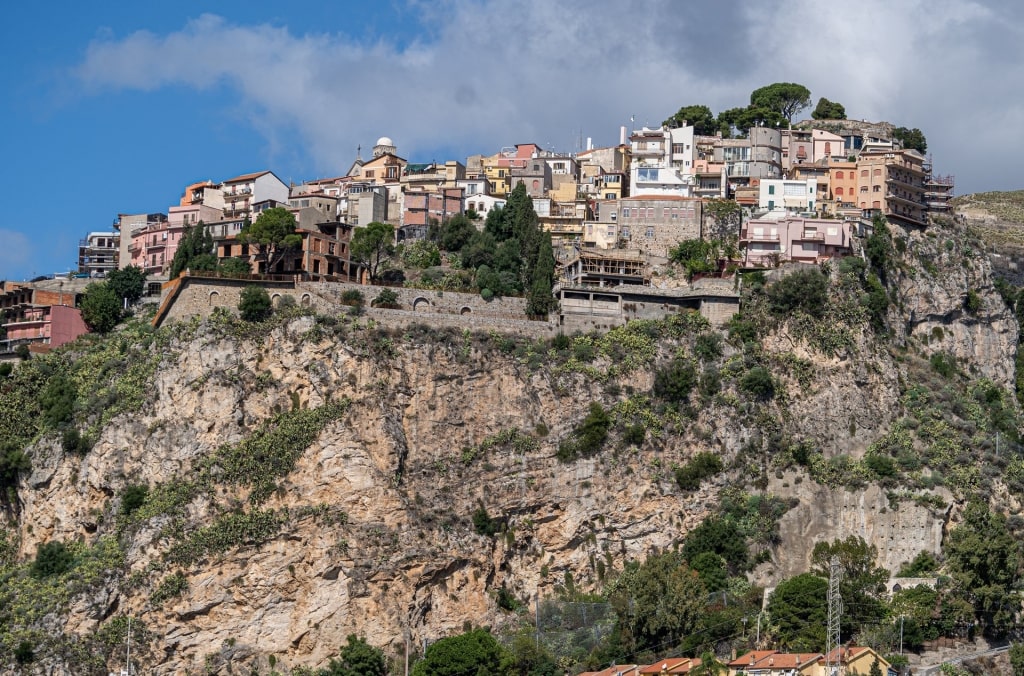
Castelmola
A satellite of the dashing resort town of Taormina, Castelmola is found slightly more inland and a little higher up on the side of a mountain.
As such, the panoramas of the island’s eastern coastline and Etna’s volcanic pomp from Castelmola’s diamond-patterned piazza are arguably some of the best of any of the towns in Sicily.
Far-reaching lines of sight were an essential ingredient for the Normans, who founded Castelmola as an imposing fortress. It’s since evolved into one of the most breathtaking villages in Sicily with baroque homes in mustard and dusky pinks that blend organically with its martial foundations.
Once you’ve soaked in the vistas, it’s time to drink the local vino. Caffe San Giorgio, warmly serving the Castelmoli for four centuries, is the fountainhead for the village’s famous vino alla mandorla—an intense, syrupy white wine blended from bitter almonds, citrus essences, and Sicilian grapes.
According to its creator, Mr. Blandano, its flavor captures the sensory thrill of Sicily in a glass. Salute!
Savoca
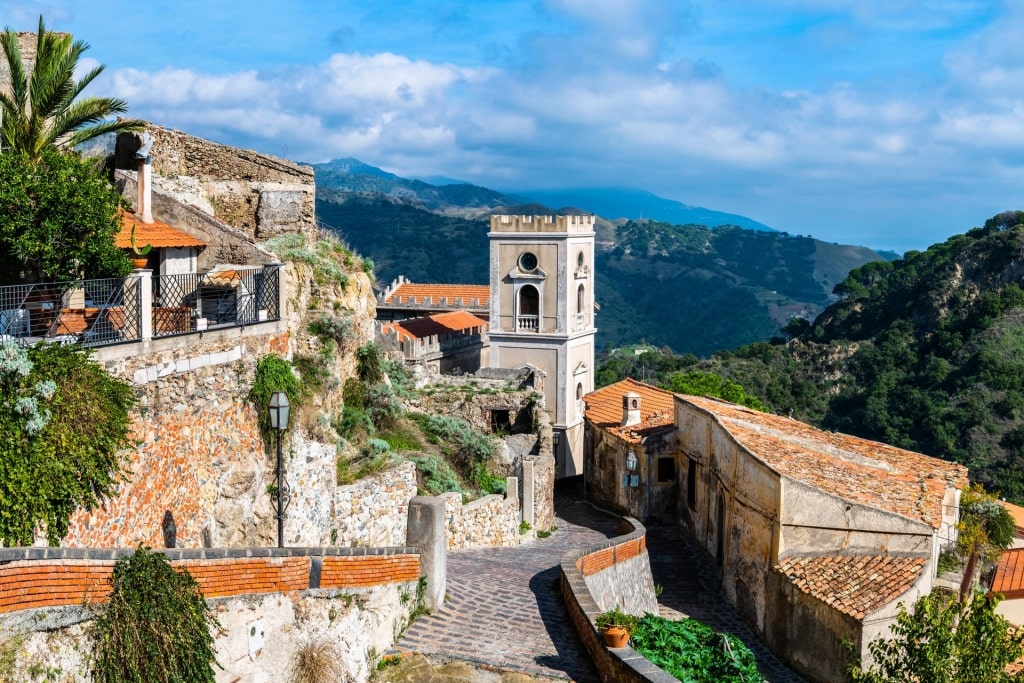
Savoca
Slotted between Sicily’s ancient gateway city of Messina and spritzy Taormina, Savoca is a significant stop on canny travelers’ itineraries.
Regarded as one of the most attractive towns in Sicily, Savoca’s aged architecture rambles across two shrub-covered peaks overlooking the east coast. Amid the scented drifts of lavender, rosemary, and wild thyme, you’ll find the fragrant white flowers of savoca (or “elder”) after which the town is named.
Standing in the scented air, you’ll admire awe-inspiring views that take in the Strait of Messina all the way across to the brown hills of Calabria.
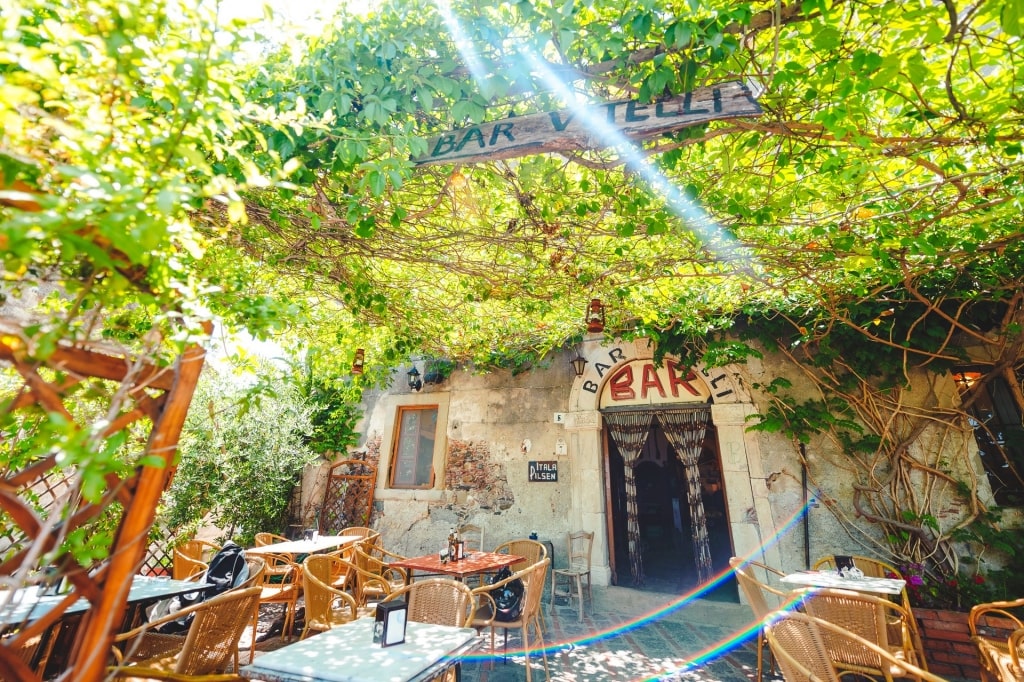
Bar Vitelli, Savoca
Visit the nearby vine-covered Palazzo Trimarchi and the bead curtains of Bar Vitelli installed on the ground floor. Then treat yourself to some of the signora’s superb granita—a crushed ice treat that, for many Sicilians, is considered a breakfast of champions.
Forza d’Agro
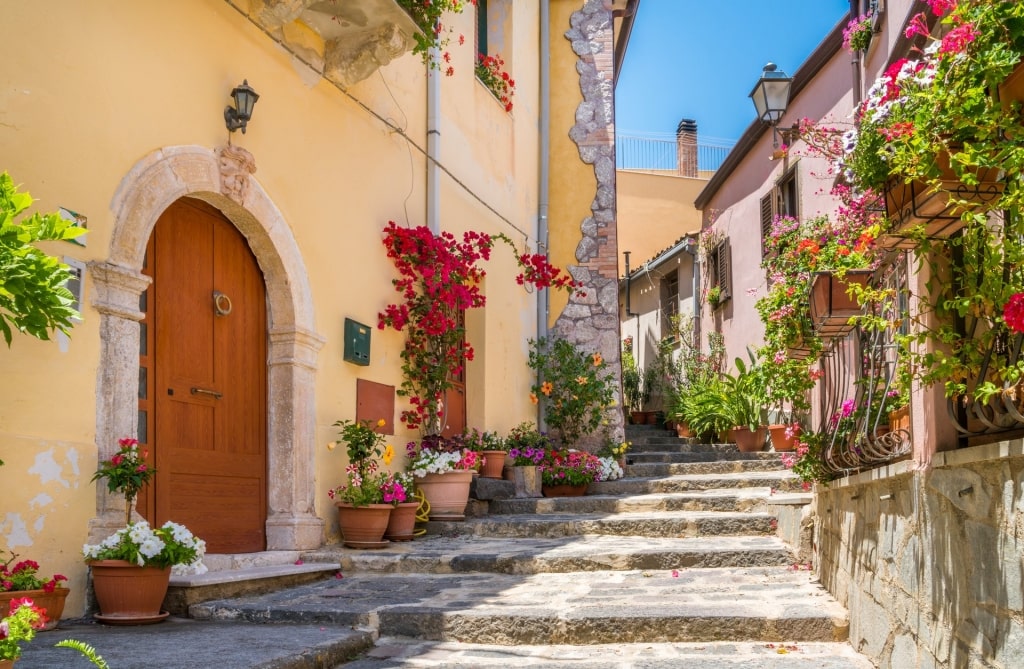
Forza d’Agro
Is a village worth risking your life over? It’s a question you might ask yourself after some of the more nail-biting hairpin bends on the way to lofty Forza d’Agro.
Once you’re submerged in the town’s cobbled streets, you’ll find it easy to fall in love with Forza d’Agro’s disheveled beauty and Sicilian authenticity. There’s a sense of something in the warm air of Forza d’Agro, enhanced by its stately medieval buildings and high altitude remove, of a medieval way of life not yet fully overtaken by modern-day.
Which isn’t to say they don’t stock Aperol in the local bars. While soaking up the unique vibe, take time to relax in the town’s elegant Piazza della Triade. Afterward, if you’ve time, check out the unique chocolate museum with exhibits of Sicilian landmarks wrought from delicious cocoa. Look, but don’t lick.
Taormina
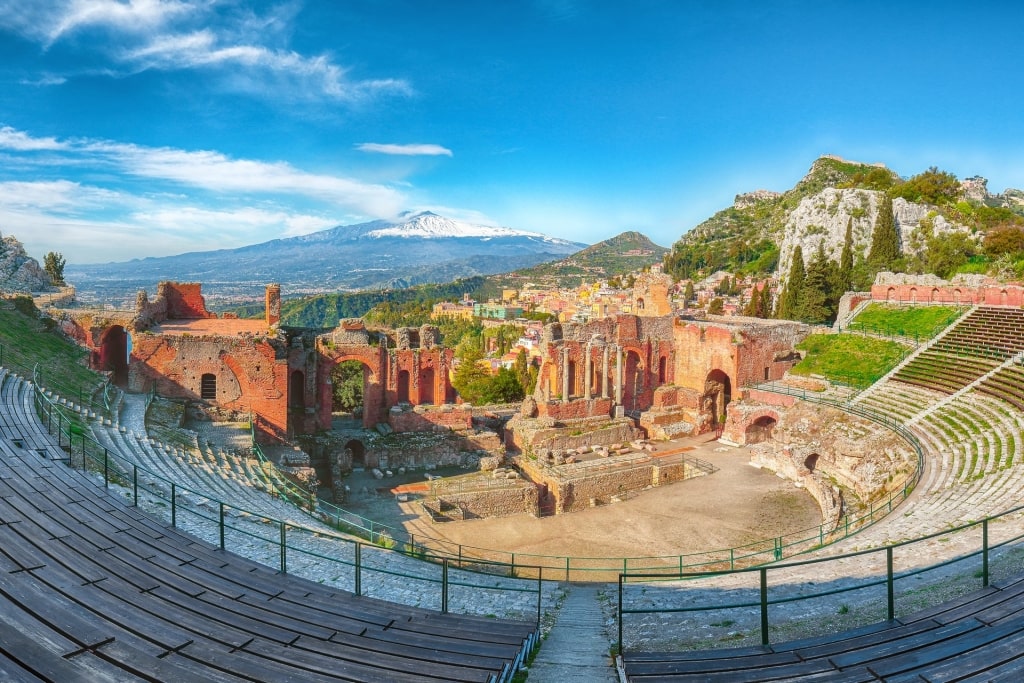
Greek Theater of Taormina
Set 200 feet above the lapping Ionian sea and crowned with a spectacular, half-ruined Greek Theater, Taormina looks more like an 18th-century artist’s rendering of some Italian idyll than a place that could actually exist.
But it certainly does. Taormina was an essential stop on the itinerary for European high society’s bright young things. Among its famous visitors who decided to stay a little longer was D. H. Lawrence, who famously wrote his taboo-busting Lady Chatterley’s Lover while enjoying Taormina’s orange-scented sea breezes.
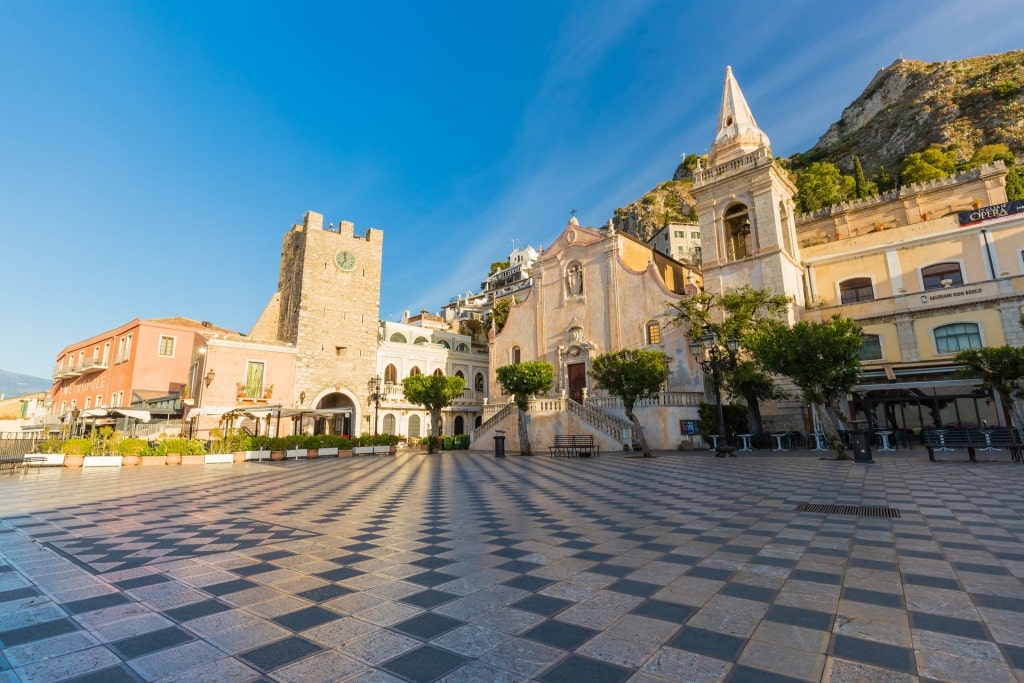
Corso Umberto, Taormina
The aromas get decidedly more complex along Taormina’s high street, the historic Corso Umberto. This pedestrianized parade of cannoli-specialist bakeries and high-end boutiques is interspersed with arched stone doorways and dazzling flower boxes that were made to linger upon. Be sure to eventually reach Piazza XI Aprile and enjoy its astonishing views over the coastline.
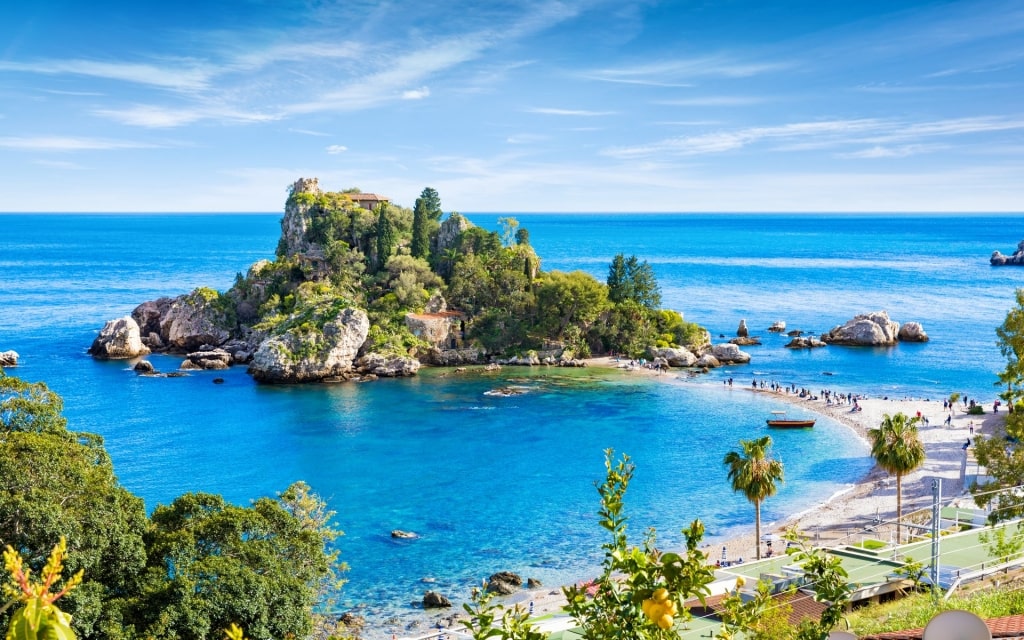
Isola Bella, Taormina
From here you can see Isola Bella, the famed white-sand beach with its craggy islet just offshore joined at low tide by a string of sand. Formerly the abode of an English exile who’d had a fling with Queen Victoria’s son, the isle has since been transformed into a nature reserve.
But you won’t be able to stop glancing up at that monumental ruin above the town—the Greek Theater, one of the best theaters in the world. Sicily’s second-largest theater, Taormina’s showpiece has a busy calendar of musical events during the good weather seasons.
However, it’s a wonder how anyone can concentrate on the productions with Etna in the backdrop, gathering lenticular clouds on its uppermost elevations.
Tindari
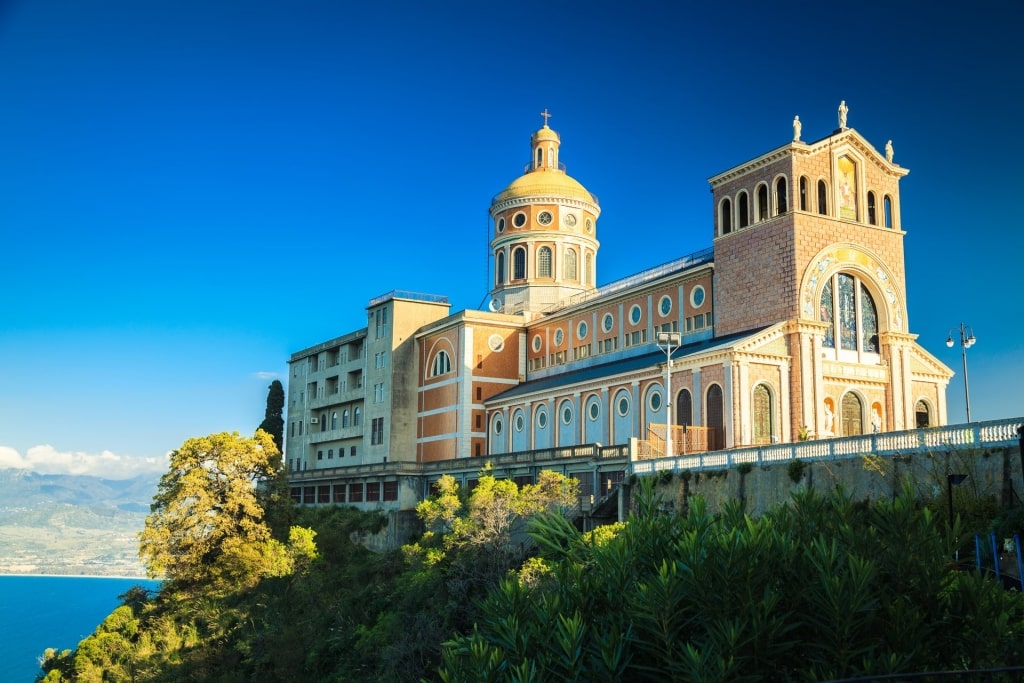
Black Madonna, Tindari
Yet another of those cliffside towns in Sicily with panoramas that you’ll want to gaze at forever, Tindari is positioned on the north coast with matchless views of the Aeolian islands.
If volcanic Stromboli isn’t pulling focus, Tindari’s comely lagoon below, with its tongue of golden sand, might tempt you to spend the whole day dipping in and out of the warm Tyrrhenian Sea. However, any visit to Tindari is incomplete without an inspection of its famous Black Madonna.
While the Madonna may be black due to the effect of the carved cedar darkening with age, the chunky cathedral where it is reverently installed is an astonishing pink and gold.
This unusual representation of Mary and the baby Jesus has long been a draw for Christian pilgrims, especially with its mystical back story involving a miraculous arrival on the attractive beach below the town.
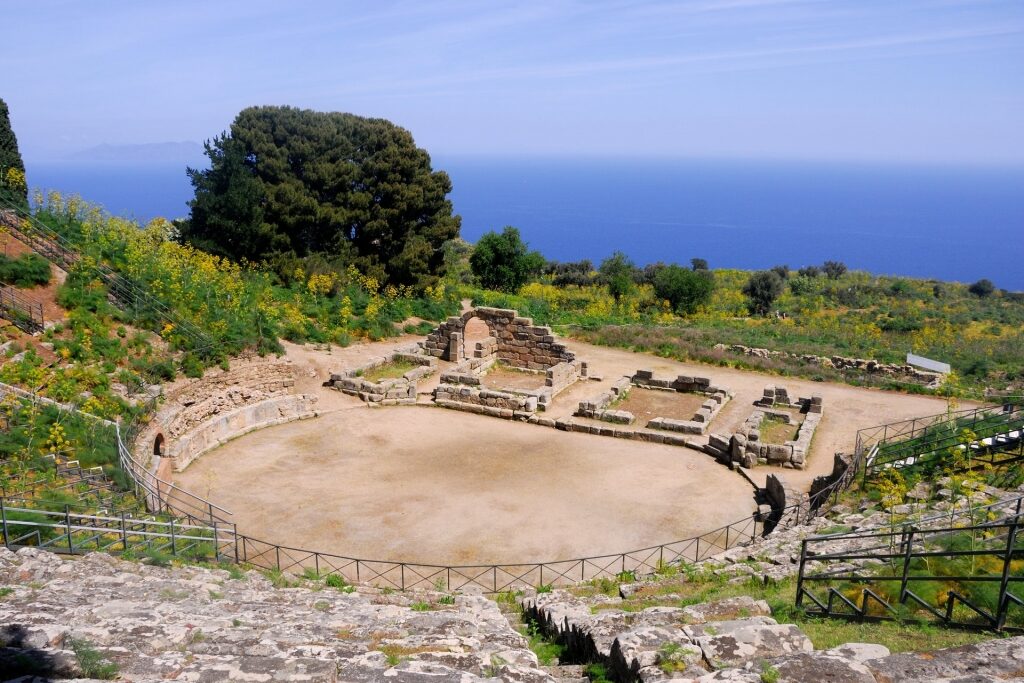
Greek Theatre, Tindari
Of course, no significant Sicilian town is complete without a superb ancient ruin to ponder over. Tindari is no different, offering an impressively intact 4th-century Greek Theatre that overlooks the azure sea.
Catania
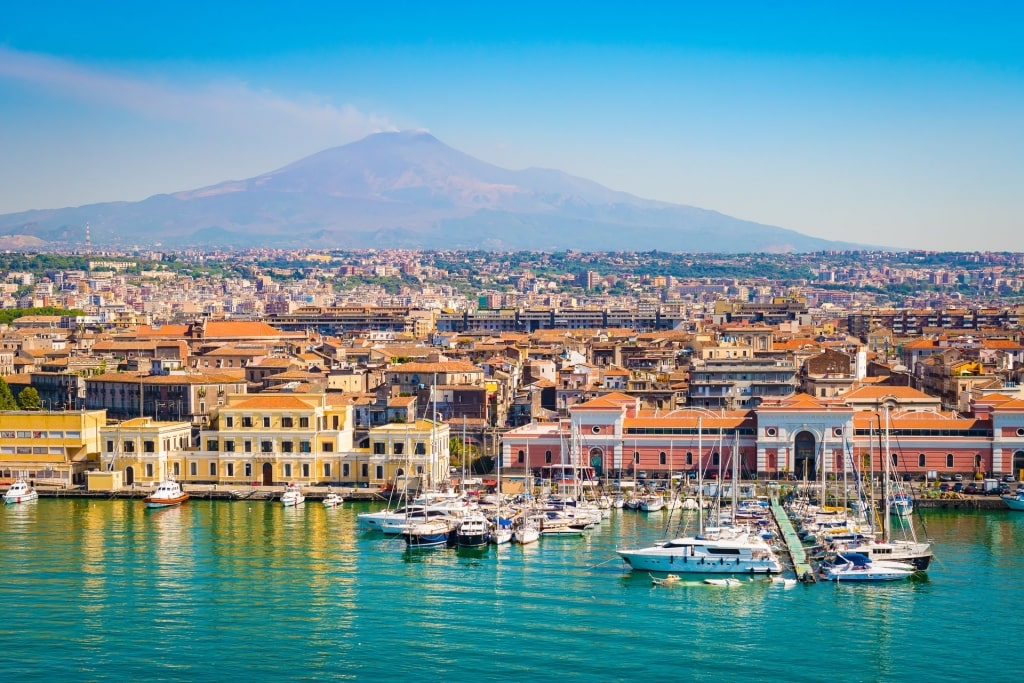
Catania
This ancient port city has a motto that could probably apply to Sicily as a whole: “From the ruins, I emerge stronger.” Catania has endured more than its fair share of volcano-inflicted destruction, including a devastating earthquake in 1693 that wiped out two-thirds of Catania’s population.
However, the motto is proved by the city that stands today: Sicilian-baroque streets crammed with colorful shop awnings that lead into compactly grand piazzas noisy with the gurgling of elaborate marble fountains.
In between, there are astonishing one-offs such as the pocket of groomed lushness that is Giardino Bellini park, the puffed-up frontage of Teatro Massimo Bellini, or the extraordinary remains of the Roman Amphitheatre of Catania sunk into a nook in the Old Town.
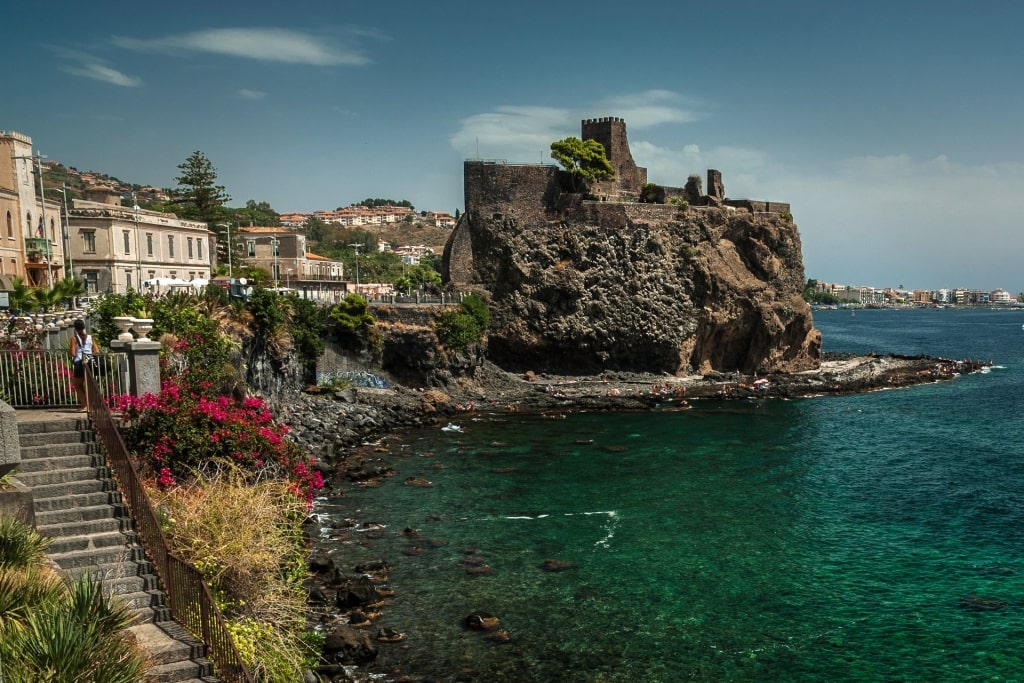
Norman Castle, Aci Castello
While the maze-like interior of Catania could keep you happily occupied for days, you’ll also find treasures if you head out to the surrounding area. A twenty-minute dash up the coast to the town of Aci Castello will bring you to the Norman Castle, one of the most beautiful castles in Italy.
With its ash-gray fortifications emerging from a basalt sea cliff of the same hue, the castle is a striking remnant of the Norman occupation and a fine example of the necklace of fortifications that ring the Sicilian coast. More than just a historic curiosity, there’s a museum within it as well as a shady botanical garden on one of its terraces.
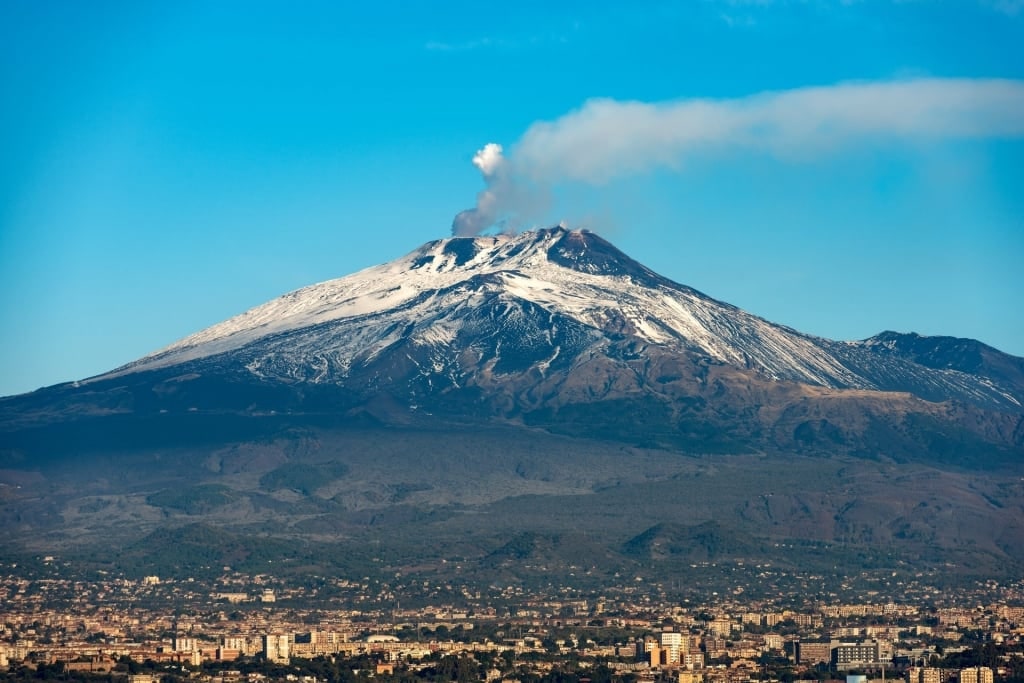
Mount Etna
And of course, there’s Etna, with the volcano’s lower flanks coming close to the city’s northern suburbs. Catania is the perfect jumping-off point for a drive up the mountain’s wiggly, forested roads. In the summer, go on a Nero-d’Avola wine-tasting jaunt on its fertile volcanic slopes.
Read: 12 Best Beaches in Italy
Palermo
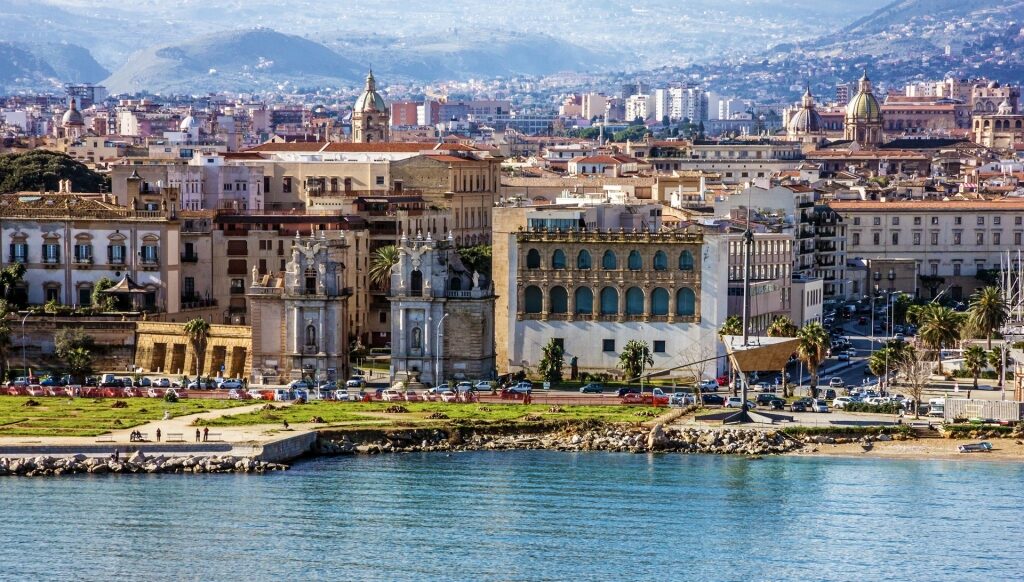
Palermo
A restless embodiment of all the layered culture, historic strife, and fulsome architectural showiness that makes Sicily so thrilling, Palermo is the island’s capital from more than just a political perspective.
Its gifts were highlighted in 2018 when it took a turn as the Italian Capital of Culture, but, as any visiting mainlander would have immediately sensed, its Italianness is only the most recent mask resting lightly above a complex, distinctly Sicilian identity.
You’ll witness its Arabic influences in its raucous souk-like food markets and sense its melting pot nature that stretches back into the dim early centuries while wandering amid its facades of elegant decay and brightly colored domes.
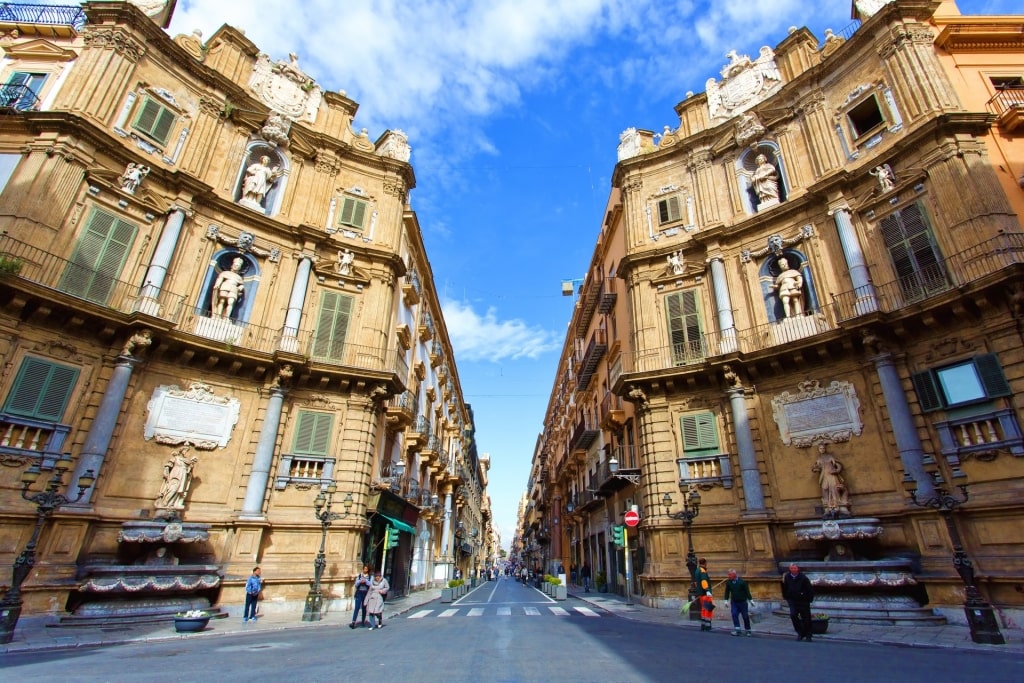
Quattro Canti, Palermo
You’ll get lost amid the din in the energizing throng. Re-orientate yourself at Piazza Vigliena—also known as the Quattro Canti (or four corners)—where the city’s two main streets intersect.
It might appear to be a grandiloquent junction, but upon closer inspection, it’s an open-air sculpture park with each rippling baroque corner adorned with the likenesses of Spanish kings. It’s also the entry point to the Vecchio Centro, or the city’s historic district, where neighborhoods can feel as intimate as those you’d find in smaller towns in Sicily.
Grandeur comes easily to Palermo. See the Massimo Theatre, a living monument to Palermo’s Liberty period heyday, and an opera house grand enough for any great metropolis.
The Norman Palace is the current fortified center of Sicilian politics and used to be the opulent seat of the island’s rulers. A tour of its royal apartments and chapel is a controlled contrast to the hectic streets beyond.
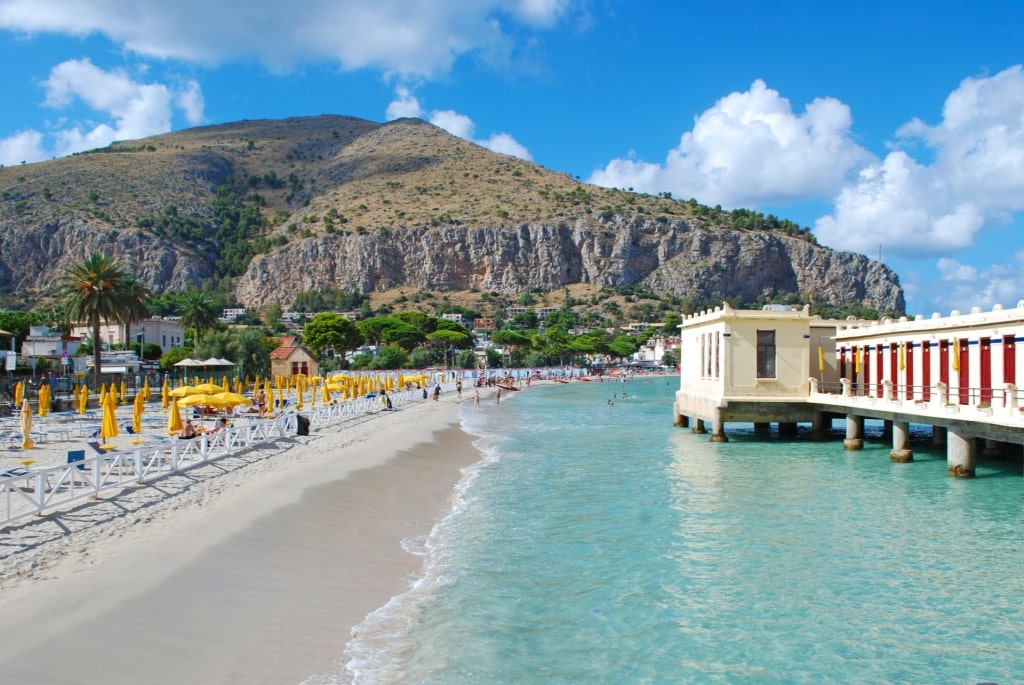
Mondello Beach, Palermo
Don’t forget that you’re in Sicily, so the coast is never far away. Take a stroll along the seafront park Foro Italico, or head north to Mondello Beach. Chic Mondello feels like where the Bahamas meets Sicily, with villas perched on the hills reflecting the white sand and crystalline blue water in their many-paneled windows.
Read: Best Beaches in Sicily
Discover Sicily’s magnetic allure and startling vistas on a cruise to Italy. Browse itineraries on our website and book your next unforgettable vacation.




